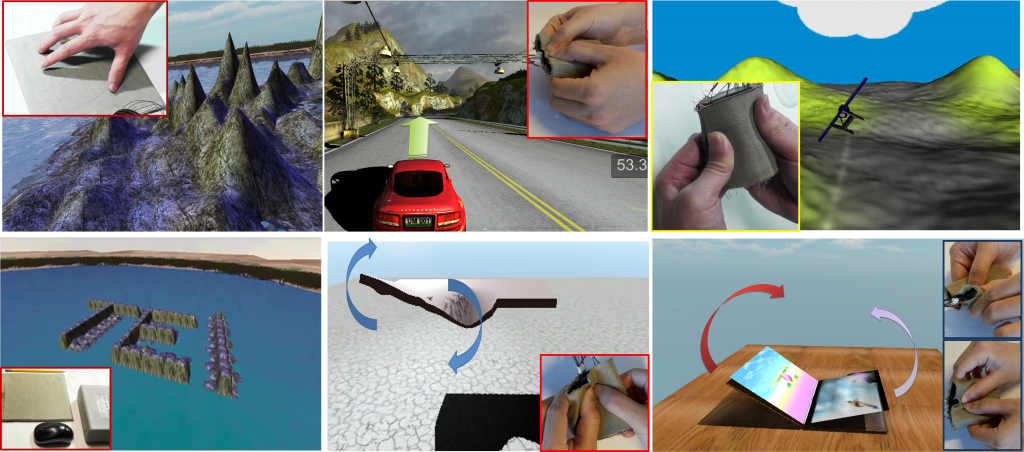We present SOFTii, a flexible input system for topography design and continuous control via external force. Our intent is to provide a tactile metaphor for pressure-based surface input. In this study, two prototypes of SOFTii have been fabricated: (a) The first prototype has one pressure surface for topography design with everyday tangible objects, (b) the second prototype, having two force input surfaces, performs as a deformable controller for video games and continuous shape modeling using a SVM algorithm. Both prototypes of SOFTii are constructed by layering Polymethylsiloxane (PDMS), ITO coated PET film, and conductive fabric and foam. The layer configuration allows the capturing of local pressure on the SOFTii surface via distributed electrodes. Here we further discuss the implementation of the device with possible usage scenarios.
SOFTii: Soft Tangible Interface for Continuous Control of Virtual Objects with Pressure-based Input
Authors: Vinh Nguyen, Pramod Kumar, Sang Ho Yoon, Ansh Verma, Karthik Ramani
Proceedings of the 9th International Conference on Tangible, Embedded, and Embodied Interaction, Jan 15-19, Stanford University, USA. pp 539-544, 2015

Sang Ho Yoon
Sang Ho Yoon is currently working at Microsoft, Seattle, WA.
He received his PhD at Purdue University and his B.S & M.S degrees from Carnegie Mellon University in 2008 with major in Mechanical Engineering and minor in Robotics. He worked at Research Department in LG Display & LG Electronics for 5 years. There, he involved in product development for consumer electronics as well as the futuristic products including 'Transparent & Public Display', 'Assistive/Rehabilitation Robot', and 'Smart Car User Interface'.
He is particularly interested in applying novel sensing techniques to bring the new forms of input metaphor for Human-computer interaction. Areas of interest include wearable/tangible interface, sensing techniques & fabrication, and novel input device. Currently, his research aims at combining the state-of-art machine learning approaches with novel sensing technique to better support natural human-computer interaction.
[Personal Website][LinkedIn]

